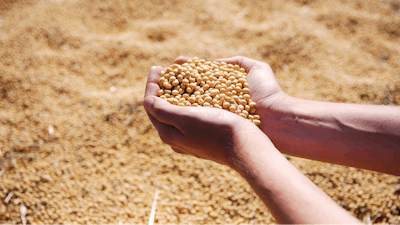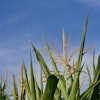
The U.S. Department of Agriculture (USDA) released its October 2024 report on global oilseeds markets, emphasizing China's continued strong demand for cottonseed imports, alongside revisions to key oilseeds markets like South Korea, Indonesia and others.
China’s cottonseed imports
China's cottonseed imports set a record in 2022/23, reaching over 650,000 tons, with Australia and the U.S. supplying nearly all of these imports. While imports are expected to remain strong in 2023/24 and 2024/25, they are forecasted to decrease slightly from the record highs. Australia’s cottonseed production rebounded after a two-year drought, and exports have been strong since 2020/21. U.S. cottonseed exports to China have also grown, with shipments for 2023/24 reaching a record high of nearly 110,000 tons.
China remains the world’s second-largest cottonseed producer and the largest consumer, producing 10.7 million tons and consuming 11.4 million tons in 2023/24. Despite increasing domestic production, China is still expected to import 500,000 tons of cottonseed in 2024/25 to meet its consumption needs.
Global oilseeds market revisions
The USDA revised key data for South Korea and Indonesia, affecting the global oilseeds market:
- South Korea: Soybean meal production estimates were adjusted to reflect changes in protein content preferences, leading to reduced extraction rates and aligned stock adjustments.
- Indonesia: Palm oil production and export estimates were lowered for 2022/23 through 2024/25 due to reduced output and carryin stocks. Export forecasts were reduced by 1.5 million tons for 2023/24 and 800,000 tons for 2024/25.
Global oilseeds overview
Global oilseeds production is forecasted to slightly decrease to 687.3 million tons due to lower soybean production in the U.S. and Ukraine, which was not fully offset by higher sunflowerseed production in Argentina and cottonseed production in China. Oilseeds trade is down slightly, with reduced exports from Ukraine and the U.S. but partially compensated by higher rapeseed exports from Canada.
Soybean prices saw volatility throughout September, driven by poor weather in South America, which later eased following rainfall in Brazil. Meanwhile, global vegetable oil markets, particularly for palm oil, sunflower oil, and rapeseed oil, experienced price increases due to tight supply expectations.
Market implications
As China continues to show strong demand for cottonseed, particularly from the U.S. and Australia, the country remains a critical player in the global oilseeds market. Meanwhile, reductions in palm oil production and exports from Indonesia, combined with weather-related production challenges in South America and Europe, are likely to keep oilseed and vegetable oil prices under pressure in the near term. The USDA’s updated data highlights these shifting dynamics and their potential impact on global agricultural markets.

















